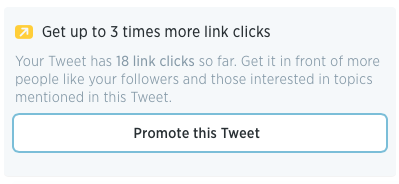I saw this Tweet from a while ago and I thought I’d write something about it:
Hyperengaged
— Gareth Price ()
An engagement rate of 186.7% clearly sounds good…but it also sounds paradoxical: how can you have an engagement rate beyond 100%?
I’ve seen this happen quite a few times, so I thought I’d finally write about it.
What’s wrong?
Twitter’s definition of engagement rate is: “the number of engagements (clicks, retweets, replies, follows and favourites) divided by the total number of impressions”.
Impressions are the number of times users saw a Tweet on Twitter.
(I can confirm that impressions and engagements are still counted even on 3rd party apps, so if you’ve viewed a Tweet on , Hootsuite or any other Twitter application on any platform, your impressions are still counted in.)
You can have more social interactions than impressions because when you view a tweet you can interact with it in different ways: click on the embedded picture, favourite, retweet, reply, send the Tweet as an email – those are already 5 social interactions (engagement) from one single view (impression). Hence, that Tweet would have an engagement rate of 500% [(5 social interactions) / (1 impression)].
You’ll notice this quirk on Facebook too if your engagement rate is based on number of engagements (consumptions on Facebook) and impressions (page/post views on Facebook). That’s the main reason why the engagement rate Facebook shows you in its Insights dashboard is calculated differently: engaged users out of people reached. That way you’re calculating the number of people who saw your post and then engaged with it, and that is the engagement rate you need.
Two Rates aren’t Always the Same
When a platform, a tool, a piece of software or anyone mentions an “engagement rate”, question how that is calculated and question what that really means. Not all engagement rates actually tell you how engaging your content is.
Is Twitter’s engagement rate a real engagement rate? Technically, in the pure form of statistics, yes. Practically, when it comes down to social analytics, no.
The engagement rate that Twitter provides, for instance, doesn’t tell you much, and it’s definitely not one I’d recommend using for your reporting. Engagement rates work best when you’re using unique values: impressions aren’t unique as Twitter counts how many times people have seen your Tweet, even if the same user has viewed it multiple times. Twitter engagements aren’t unique either, as I can engage with your Tweet multiple times, in multiple ways: I can reply to your Tweet multiple times, before then retweeting it, favouriting it, and emailing it to myself.
However, take reach and engaged users and you can tell how engaging your content really was: reach is the unique number of people who have viewed your content, even if they’ve done so multiple times; engaged users is the unique number of people who have interacted with your content, even if they’ve done so multiple times. That gives you a much better view of how engaging your content was, as it tells you if your content led people to engage with it after seeing it in their timeline. That is the engagement rate you really need.
Unfortunately, Twitter doesn’t provide those stats. Sure, you can see how many times people have seen your content, but you can’t see how many people saw your content; sure, you can see how many times people have engaged with your content, but you can’t see how many people have engaged with your content. These are subtle differences that make a huge difference if you report on these metrics (or with these metrics).
A lot of tools out there use workarounds to calculate reach, although they’re just approximations (I won’t go into it now, but you can read all about it here).
When you look at the metrics that Twitter provides, you can tell why they’re there…
Advertising.
Twitter Analytics is still under development, and I’m happy to see where it’s heading. In the meantime, I hope they shift their focus lense from social advertising to social analytics for content marketing (Twitter’s current “engagement rate” is a clear example of why that needs to happen).
In other news, I think Twitter needs a social media analyst…
*updates CV*

Pingback: Twitter Impressions ≠ Reach()
Pingback: Social Analytics Tools That Don’t Suck()